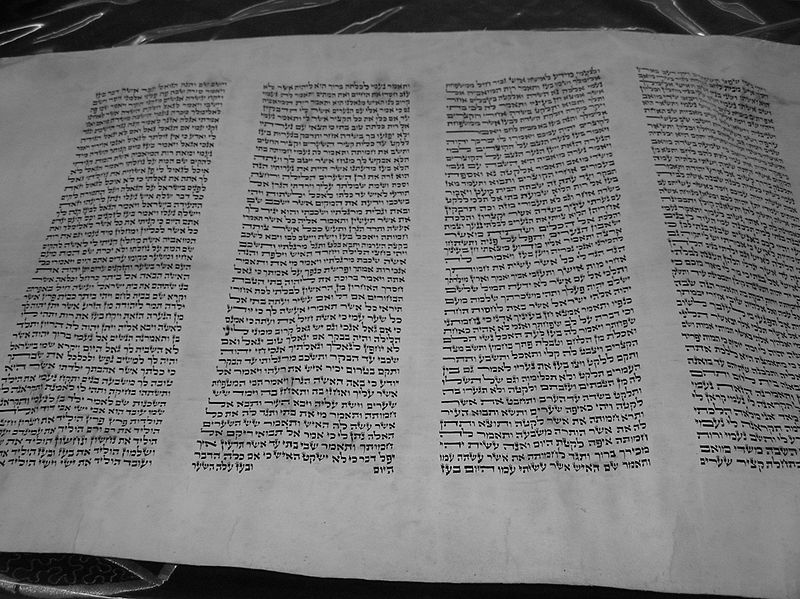
Chag HaShavuot is the second of the three annual chagim (Pilgrimage Festivals) in the Hebrew Calendar. In English Shavuot is known as the Feast of Weeks or Pentecost.
The chag is known by various names. It is known as Chag HaShavuot (Feast of Weeks) in Exodus 34:22:
And you shall observe the Feast of Weeks (וְחַג שָׁבֻעֹת), of the first fruits of the wheat harvest; and the Feast of Ingathering at the turn of the year.1
This same term for the chag is also used in Deuteronomy 16:10:
Then you shall observe the Feast of Weeks (חַג שָׁבֻעוֹת) for the Eternal One your God, offering your freewill contribution according as the Eternal One your God has blessed you.1
Shavuot is also known as Chag HaKatsir (Feast of Harvest) as seen in Exodus 23:16:
…and the Feast of the Harvest (וְחַג הַקָּצִיר), of the first fruits of your work, of what you sow in the field; and the Feast of Ingathering at the end of the year, when you gather in the results of your work from the field.1
Shavuot is also called Yom HaBikkurim (Day of the First Fruits) as we see in Numbers 28:26:
On the Day of the first fruits (וּבְיוֹם הַבִּכּוּרִים), your Feast of Weeks, when you bring an offering of new grain to the Eternal One, you shall observe a sacred occasion: you shall not work at your occupations.1
The word Shavuot means “weeks.” It marks the completion of the seven week counting period between Chag HaMatzot and Chag HaShavuot. Agriculturally, it commemorates the time when the first fruits were harvested and brought to the Temple. Shavuot is the only one of the chagim in the Tanakh not given a fixed calendar date. Instead, we are commanded to celebrate this chag at the end of a 50-day period known as the Counting of the Omer. Shavuot falls on the 50th day of the Omer.
And from the day on which you bring the sheaf of elevation offering – the day after the Shabbat – you shall count off seven weeks. They must be complete: you must count until the day after the seventh week – fifty days; then you shall bring an offering of new grain to the Eternal One. … On that same day you shall hold a celebration; it shall be a sacred occasion for you; you shall not work at your occupations. This is a law for all time in all your settlements, throughout the ages. (Leviticus 23:15-16, 21)1
Rabbinic Traditions
According to Rabbinic tradition Shavuot is also known as Chag Matan Torateinu (the Festival of the Giving of Our Torah) because it is the day we celebrate the giving of the Torah at Mount Sinai. The Rabbinic Sages have compared the giving of the Torah to a wedding between God and the Jewish people. Shavuot also means oath and on this day God swore eternal devotion to us, and we in turn pledged everlasting loyalty to Him.2 There also exists a beautiful custom of decorating the synagogue on Shavuot with flowers and greens, because of the vegetation on Mount Sinai.
It is customary to stay up the entire first night of Shavuot and study Torah then pray as early as possible in the morning. Torah study is regarded as the most important of all mitzvot, because it opens the door for observance of the other mitzvot (Shabbat 127a).3 It is customary to eat a dairy meal at least once during Shavuot as a reminder of the promise regarding the land of Israel, a land flowing with milk and honey. It is also a reminder of how Moses’ mother Yocheved was allowed to nurse her child who was rescued from the Nile on Shavuot according to Rabbinic tradition.4 The Book of Ruth is read at this time as an honor to Ruth’s descendent King David who, according to tradition, was born on this day and also died on this day.
Karaite Traditions
In the late Second Temple times there arose a debate between the Boethusians and the Pharisees about whether the “morrow of the Sabbath” refers to the Sunday during Chag HaMatzot or the second day of Chag HaMatzot (16th of Nisan). Like the Boethusians and the ancient Israelites, Karaites count the 50 days of the Omer from the Sunday during Chag HaMatzot. This means that unlike the Rabbinates, Karaites always celebrate Shavuot on Sunday.5
Shavuot commemorates two events: the conquest of the Land of Israel and the sowing of the Land of Israel with seeds. The Land of Israel must receive the Eternal One’s blessings which depends upon the Israelites keeping the Eternal One’s mitzvot.6
Some Karaites – like the Rabbinates – eat dairy products and honey on Shavuot as a symbol of our hopes for the New Year. Food from the new crops and dried fruits left over from Chag HaMatzot are also eaten.6 In addition, extra prayers are offered on this chag in place of the offerings brought to the Temple.
——————–
1David Stein (ed.). JPS Hebrew-English Tanakh. Philadelphia: The Jewish Publication Society, 1999.
2“What is Shavuot.” Chabad, n.d. [http://www.chabad.org/library/article_cdo/aid/609663/jewish/Shavuot.htm]
3Shraga Simmons. All Nite Torathon Aish, 14 May 2002. [http://www.aish.com/h/sh/tat/48967291.html]
4“Customs of Shavuot.” Orthodox Union, n.d. [http://www.ou.org/torah/article/customs_of_shavuot#.UYZeIMoTKO4]
5Nehemia Gordon. “Shavuot.” karaite-korner.org. Karaite Korner, 2008. [http://karaite-korner.org/shavuot.shtml]
6al-Qirqisani Center. An Introduction to Karaite Judaism: History, Theology, Practice, and Custom. Troy, NY: al-Qirqisani Center for the Promotion of Karaite Studies, 2003.
